Get Ready, Here Comes the Sexy New 2020 Dyson
Herbert Hoover promised Americans a chicken in every pot and a car in every garage, but another man with a vacuum-associated name, James Dyson, wants to put electric cars in every parking spot.
Dyson, maker of strangely desirable vacuum cleaners and unsettlingly futuristic fans shaped like an elongated oval, wants to build you a car. Of course, we told you this last year, after the British government let slip that it was “funding Dyson to develop a new battery electric vehicle at their headquarters in Malmesbury, Wiltshire.”
The secretive UK-based company now claims you’ll see its new car in just three years.
California's Current Strategy to Ban Internal Combustion Engines
California has been toying with the idea of banning internal combustion motors for a couple of years now. While the concept is gaining popularity across the globe, the ban itself is a bit misleading. Regions in favor of the idea aren’t really pursuing an outright ban on engines that burn gasoline; they’re trying to mandate electrification and reduce emissions via non-traditional powertrains.
In April of 2015, California Governor Jerry Brown announced, “If the federal government can’t get it right, we in California are going to take care of business.” With the Trump administration making strides to roll back regulatory efforts, it appears the state of California is ready to pop in some Bachman–Turner Overdrive and begin taking care of said business.
Further Proof That Hydrogen Cars Are Stupid
Hydrogen is the most abundant element in our universe and hydrogen-powered vehicles produce only a single emission: water. It’s no wonder a handful automakers have touted it as the next-step in “sustainable” transportation, because it looks great upon a cursory examination. But it hasn’t held up under increased scrutiny and numerous manufacturers have been highly critical of fuel cell cars.
Earlier this year, Jaguar Land Rover’s technical design director called hydrogen-powered vehicles a disaster in practical efficiency. Tesla Motors’ Elon Musk went even further, calling the technology “incredibly dumb.” More recently, VW Group also hinted that it thought there wasn’t going to be much of a future for fuel cells. Matthias Mueller’s address at the Frankfurt Auto Show was heavy on electrification and light on hydrogen, with Audi spearheading the technology.
Although, if president of Audi of America Scott Keogh is to be believed, it looks to be a rather dull spear they are using.
Mercedes-Benz Spending $1 Billion to Build All-electric SUVs in, Where Else, Alabama
Mercedes-Benz is investing $1 billion into its Tuscaloosa, Alabama, assembly operations in order to facilitate the production of its first EQ-branded SUVs in 2020. The investment, timed to roughly coincide with the beginning of Mercedes-Benz ML production in Alabama, is expected to result in the hiring of another 600 employees.
In the near term, Mercedes-Benz has been open with its doubts regarding the profitability of pure electric vehicles. Evidently, the long-term view is different. And it probably doesn’t hurt to pour more money into a U.S. operations hub that accounts for nearly half the vehicles sold by the automaker in America.
Sounds an Awful Lot Like Free Market Capitalism: Akio Toyoda Says Toyota Will Build the Vehicles People Want
Earlier this month, Toyota board chairman Takeshi Uchiyamada told CNBC that the company was “skeptical there would be a rapid shift to pure electric vehicles, given questions over user convenience.”
It shouldn’t be perceived as a revolutionary thought. But with automakers increasingly touting their plans for “electrification” — a word too many observers have interpreted incorrectly — and regulators increasingly promoting their plans to do away with internal combustion engines, Uchiyamada’s honesty regarding the limitations of electric vehicles flew in the face of advanced automotive thought.
It did not, however, fly in the face of conventional Toyota thought. According to Reuters, the president of Toyota Motor Corporation, Akio Toyoda, says, “EVs are in focus at the moment but customers and the market will ultimately decide which powertrains will be successful.”
You’d almost think Akio Toyoda was — crazy as this may sound — running a business.
More Internal Combustion Abandonment: Mazda Plans Fully Electric Fleet By 'Early 2030s'
Mazda recently announced the testing of its Skyactiv-X compression ignition engine, which promises to burn gasoline with diesel-like efficiency. If it hits its projected launch date of 2019, it will become the first mass-produced motor of its type and is likely to be showered with praise from environmentalists and enthusiasts alike.
However, as we progress deeper into the millennium, it’s becoming evident that more and more automakers are willing to embrace electricity as the next solution to efficiency. That makes Mazda a bit of an oddity, maybe even a dinosaur, and we were wondering when the company would give in to electrification. Especially since it has already partnered with Toyota to tighten its grasp on the technology.
BMW Switching to Flexible EV Architecture for All Models in 2020
Earlier this year, BMW let fly that it had completed development on a flexible vehicle architecture that would enable electrification of every model series in its stable. By 2025, BMW Group expects electrified vehicles to account for between 15 to 25 percent of its sales, but it wanted to be ready in case 100 percent was a possibility.
We know that plug-in versions of just about every model are forthcoming — the big news being the fully electric X3 for 2020. But we didn’t have a solid timeline for widespread implementation of the new platform, capable of accepting electric, plug-in hybrid and internal combustion powertrains. Now we do. According to management board member Klaus Fröhlich, it’s also going to begin in 2020.
With Mercedes-Benz Going Electrified, How Does the Company Avoid Tanking?
Everyone’s doing it. It’s as popular as the fidget spinner and Pokémon Go crazes all those years months ago. In a rush to signal their environmental bonafides and display their dedication to the Next Big Thing, luxury automakers are tripping over themselves in an effort to promise an all-electrified model lineup as soon as technology and finances allow.
This time, it’s Mercedes-Benz. The world’s oldest car brand doesn’t want its rivals cashing in once governments around the globe start turning off the fossil fuel taps. So, earlier this week, Daimler CEO Dieter Zetsche stepped up and made a promise we’ve heard ad nauseum as of late: every model in the brand’s lineup will soon sport some form of electric propulsion, be it a hybrid setup or full-on battery electric powertrain.
For Mercedes-Benz, this means 50 hybrid or EV models, including at its irrelevant-to-Americans Smart brand. The move isn’t without a steep cost, however — Daimler is bracing for a slashing of vehicle profit margins. In some cases, the green collected from green cars could be half that of a gasoline Benz. What to do?
Production Porsche Mission E Priced Around $85,000 in 2019; 80-percent Charge Takes 15 Minutes
“It is very close to what you saw two years ago at Frankfurt,” Porsche CEO Oliver Blume says of the forthcoming production version of 2015’s stunning Mission E Concept.
“It will be exciting but a bit different from the concept,” Blume told CAR Magazine at the Frankfurt Motor Show.
That’s for beholders to gauge once the production version of the Mission E is pictured in 2019, when the model arrives exclusively with electric powertrains. Oliver Blume did, however, make clearer commitments relative to the Mission E that will delight Porschephiles and — perhaps — convert Tesla fans.
Right from launch, the Porsche Mission E — likely a 2020 model year vehicle — will be marketed with a 350 kW charge rate that “will be enough for a 400-kilometer range on an 80 percent charge,” Blume says. That’s 250 miles of range from a 15-minute charge. All of this in a car that Porsche claims accelerates from rest to 60 miles per hour in 3.5 seconds and tops 155 mph, a car Porsche couldn’t have developed “so quickly without the 919” — the automaker’s Le Mans-winning hybrid endurance racer.
Caterpillar to Crossover: Volkswagen Unveils I.D. Crozz Mark II at Frankfurt Motor Show
Volkswagen debuted a more realistic version of its I.D. Crozz concept vehicle at the Frankfurt Motor Show this week. While still a fantasy model, the physical representation that appeared at the trade event (and VW’s latest round of stylized images) hint at what the production vehicle will actually look like.
While it doesn’t have the conservative and understatedly handsome appearance of a typical VW, the Crozz is more or less on par with the styling of its I.D. sub-brand. It’s also is rumored to be the first of the I.D. vehicles offered for sale in the North American market. Anyone hoping for a pod-like electrified Tiguan ought to be chuffed by the prospect as they prepare their checkbooks.
The Honda Urban EV Concept Is What We All Want Honda to Be
“This is not some vision of the distant future,” Honda CEO Takahiro Hachigo says of the Honda Urban EV Concept that debuts at the Frankfurt Motor Show. “A production version of this car will be here in Europe in 2019.”
Be a skeptic if you like. Honda’s recent history is full of pie-in-the-sky small car concepts that never came to production fruition: Remix, Step Bus, IMAS, Puyo, P-Nut, Gear. But there are also Honda concepts that ended up in the real world. The Model X Concept became the Element, the CR-Z Concept became the CR-Z, the SUT Concept arrived as the Ridgeline.
Honda has every intention to introduce the delightfully retro-modern Urban EV, albeit most assuredly without suicide doors, gigantic wheels, a front bench, or the unusually minimalistic interior. Yet if Honda can maintain the silhouette, a blend of early Civic and Mk1 Golf GTI, we’ll begin to wonder whether Honda’s lost decade – in which mistakes were made and costs were cut — is about to produce evidence of a reinvigorated Honda.
Tesla Discovers an Obvious Place for Urban Owners to Fuel Up
Until now, Tesla’s growing network of Supercharger stations was generally aimed at the long-distance crowd. If a (very) premium-priced sedan can’t make the five-hour trip to your sister’s house for Thanksgiving, well, second thoughts might crop up about that purchase.
To accomplish the goal of Tesla proliferation, much of the automaker’s fast-charge network sprouted up in locales convenient for travellers. Places like Holiday Inn Express parking lots, restaurants, visitor centers, and Macadoodles Fine Wine & Spirits in Springfield, Missouri. In the Midwest, hungry travellers can hop off the Interstate and charge up at Meijer while shopping for juice boxes and potato wedges.
However, logic (and infrastructure) states that the majority of Tesla buyers, current and future, live in large cities and don’t leave town all that often. They’re also more likely live in condos with garages free of any plug-in points. Tesla’s latest round of Supercharger construction takes this into account, dropping the fast-charge stations directly where those urbanites inevitably show up once a week.
Up Close With the Workhorse W-15, an EV Truck Headed to U.S. Driveways
As part of National Drive Electric Week, the Cincinnati-based Workhorse Group displayed their prototype W-15 EV pickup truck at the local Cincinnati event. TTAC got some more information on the future of this pickup, as well as a turn behind the wheel.
Come have a look.
Nissan Leaf Range Upgrade Remains a Mystery of Our Time
A week after the unveiling of the second-generation 2018 Nissan Leaf, we know for sure that value, value, value! is the upgraded model’s strongest selling point.
No longer offering a paltry 107 miles of range, the new Leaf sports a just-good-enough 150 miles of driving distance, or so Nissan believes. Of course, knowing that Chevrolet’s Bolt and Tesla’s Model 3 offer significantly better range, the Leaf’s priced to sell. For $29,990 plus delivery, and minus a $7,500 tax credit, Nissan figures the base S model is enough to tempt cost-conscious EV buyers who don’t want it all.
But there’s a longer-ranged Leaf in the works. For 2019, buyers can opt for a stepped-up 60 kWh battery, but just how far a so-equipped Leaf can drive on a single charge differs depending on the Nissan exec doing the talking.
National Drive Electric Week Events, Free and Probably Near You
Since 2011, National Drive Electric Week has taken place in venues across the United States, some Canadian locations, and at select international venues. This year, it runs from Saturday, September 9th through Sunday, September 17th.
There are 262 event locations for 2017, so there’s probably an event not far away, assuming you’re electrically inclined.
Seemingly Every Automotive Headline Includes Electric This or That, but What's the State of Electric Vehicle Market Share in America?
You can forget the GM EV1 and the Toyota RAV4 EV. The car that truly attempted to bring electric cars into the mainstream was the 2011 Nissan Leaf.
It didn’t. U.S. Leaf sales, never reaching any great heights, plunged after its fourth full model year, falling by more than half between 2014 and 2016.
There’s a thoroughly updated second-gen Nissan Leaf on its way, destined to hit U.S. dealers early in 2018. But during the first-gen Leaf’s tenure, the Nissan was joined by a broad array of electric cars, from a handful of Teslas to the Chevrolet Bolt, Volkswagen e-Golf, Kia Soul EV, BMW i3, and Hyundai Ioniq, and all of these cars together have combined to quintuple U.S. electric vehicle market share over the last half-decade.
Only 0.1 percent of the new vehicles sold in America in 2012 were pure EVs. That figure has risen, very slowly, to 0.5 percent through the first eight months of 2017 while the number of available nameplates has more than doubled.
Perspective? Ford grew its F-Series’ share of the overall U.S. new vehicle market from 4.5 percent to 5.1 percent during the same period.
Lincoln to Become the Next 'Electrified' Premium Brand: Report
It’s getting to the point that if you’re not a premium automaker promising some sort of brand-wide electric propulsion revolution, you’re not a premium automaker. Volvo has announced it’s going all-electrified (not necessarily electric) in short order. Maserati and Aston Martin are headed in a similar direction.
Is Lincoln the next luxury brand to ditch gas-only powertrains?
Not quite, but Ford’s luxury arm is planning on endowing every model in its lineup with an available hybrid powertrain, according to three sources who spoke to Reuters. It’s a plan very similar to the one Jaguar Land Rover announced just yesterday. While the completion date for Lincoln’s lineup electrification is 2022, the brand might not stop at just hybrids and plug-ins.
Jaguar Land Rover Promises Electrified Lineup From 2020 Onward, Includes Vintage E-Type
Jaguar Land Rover is buzzing this week with news that every single model introduced after 2020 will be electrified.
Excited to showcase its “commitment to the future,” JLR even provided a converted E-Type for its mobility-themed Tech Fest. Dubbed the E-Type Zero, the car is a 1968 Series 1.5 Roadster with its traditional powertrain swapped in favor of a 220 kW electric motor. While the old EV switcharoo provides instantaneous torque, an increase in horsepower, and ought to make fans of the cars in Gattaca very happy, Jag purists will probably hate it.
However, the company’s decision isn’t about a high-profile one-off. This is a sea change for JLR, echoing Volvo’s recent decision to march headlong into electrification.
2018 Nissan Leaf - The Industry's Oldest Mainstream Electric Car Turns Over a New… Well, You Get the Idea
Back in December of 2010, if anyone can remember that hazy, long-ago time, an oddly shaped five-door rolled out of the minds of Japanese executives and onto U.S. dealer lots. Unlike its fledgling electric forebears, the 2011 Nissan Leaf promised practical gas-free transportation for the whole family, bolstered by a warranty from an established automaker and 73 miles of EPA-approved driving range.
The industry had just taken a big step. However, the Leaf, despite racking up an impressive model-life sales total, soon found itself leapfrogged by competitors with greater range and more conventional styling. By the time 2017 rolled around, the Leaf’s 107-mile range and now-dated body stood in stark contrast to sleeker models delivering 200 miles of driving from every turn at the plug.
Nissan wants to change that. For 2018, the second-generation Leaf arrives with greater — but not class-leading — range, a new body (with a familiar profile), and a lower entry price. The automaker clearly feels there’s thrifty EV buyers capable of saying “no” to the Tesla Model 3 and Chevrolet Bolt.
Nationwide Availability Means Chevrolet Bolt Has Outsold Chevrolet Volt Two Months Running
August 2017 marked the second consecutive month in which the Chevrolet Bolt, GM’s all-electric hatchback, generated more U.S. sales than the Chevrolet Volt, GM’s range-extended electric liftback.
Now available across America, the Chevrolet Bolt produced its best sales month to date in August.
The Chevrolet Volt, meanwhile, suffered its fifth consecutive month of decline.
Bolt > Volt?
Toyota Chairman: Shift to Electric Vehicles Will Not Be Rapid
Mazda is planning for the internal combustion engine of 2050. Toyota is applying the Dynamic Force improvements that worked wonders on the 2018 Camry’s fuel economy ratings to V6 and V8 engines.
And electric cars?
“We’re skeptical there would be a rapid shift to pure electric vehicles, given questions over user convenience,” Toyota chairman Takeshi Uchiyamada tells CNBC.
There is a Toyota electric car in your future, Uchiyamada believes. But more likely than not, it’s not in your near future.
QOTD: Will Your Next New Vehicle Be an Electric Vehicle?
The full-scale rollout of Chevrolet’s Bolt to all U.S. markets saw its sales reach new heights in August 2017. Not dizzying heights, mind you — with 2,107 vehicles sold last month, the all-electric Bolt’s popularity is about 34,000 units shy of the Honda Civic’s.
Still, many mainstream, gas-powered models would kill for 2,000-plus buyers per month. The Jaguar XE, XF, and XJ, for example. The Toyota 86. Oh, and the Cadillac ATS, CTS, and CT6, along with gobs of other models from various brands. It’s a grim time for cars, but certain electric vehicles find buyers solely because there isn’t much choice when it comes to ditching your fuel tank for good.
The emergence of lower-priced EVs with ranges capable of reaching another city has made the electric car, once an oddity, into something approaching mainstream status. But are you tempted by their gas-free siren song?
10 Years in the Making: Mini Previews Styling of Upcoming EV Concept
In 2009, BMW avoided jumping the gun when it introduced an electric conversion of its Mini Cooper as a test platform instead of a production vehicle. Dubbed the “Mini E,” and limited to two seats due to its massive battery pack, the prototype served as a short-term consumer testbed for field trials and was deployed in several countries, including the United States.
However, as other automakers brought production EVs into the world, Mini held off — perhaps waiting for an more advantageous moment to enter the segment.
That moment appears to have arrived. The brand decided Wednesday to tease us with photos of its new “Mini Electric Concept,” which it says will enter into production in 2019. Its shares its powertrain with the BMW i3, so expect a driving range of at least 110 e-miles (or 180 with an optional gasoline range extender) and an electric motor producing a minimum of 160 horsepower.
General Motors Hips Early EV Adopters to Potential Battery Failure in the Bolt
General Motors has informed a small number of owners of its Chevrolet Bolt EV about a battery issue that could cause a sudden loss of propulsion. Some of the early Bolt models may incorrectly report the estimated remaining range at lower states of charge due to potentially faulty cells, resulting in the car stopping abruptly.
The automaker says less than 1 percent of Bolts sold to date are likely to face the problem, and GM is currently arranging repairs for the affected cars. Ideally, the faulty cells are the result of an isolated manufacturing defect and not the result of some widespread wonky battery chemistry.
Stopping Short: Tesla's Electric 'Long-hauler' Rumored to Have a Maximum Range Under 300 Miles
Tesla Motors will be dabbling in the commercial freight industry when it unveils its electric semi-trailer next month. But, with news of it only possessing a 200- to 300-mile range between charges, dabbling may be a best-case-scenario. Diesel-powered rigs traditionally run in excess of 1,300 miles between stops, even though they also go through hundreds of gallons of fuel in the process. And it’s all that burned fuel that makes the concept of an electric tractor-trailer so appetizing to the trucking industry.
However, the EV prototype “long-hauler” won’t be fit for cross-country trips due to its limited range — meaning the inevitable Smokey and the Bandit remake probably isn’t going to have the Bandit or Snowman driving Teslas.
Money-hungry States Lining Up to Tax Self-driving Cars (Just Like EVs)
There’s few things people living in the U.S. can agree on, but one of those things is the state of American road infrastructure. For the most part, it sucks. Eisenhower’s long gone, but his network of interstate highways, plus the spiderweb of two-lane roadways cross-crossing every corner of America haven’t grown better with age.
Meanwhile, the U.S. federal gas tax remains unchanged since its last hike in 1993. Still locked at 18.4 cents per gallon, the infrastructure funding shortfall created by the static federal tax is spurring states to pass their own gas tax increases. Michigan, California, and — controversially — New Jersey are among the most recent examples.
Still, boosting prices at the pumps only works if drivers still visit those pumps. What of the coming self-driving car wave, the vanguard of which are high-tech electric vehicles piloted by mere humans? Enter the taxman and his slim book of ideas.
Take It or Leaf It: Nissan is Selling Its Battery Building Business to the Chinese
Earlier this month, Nissan announced it was in the final stages of sealing a deal to sell its entire EV battery business to Chinese investment firm GSR Capital. The sale includes battery plants in Tennessee, England, and Japan, with a preamble where the Japanese automaker has to buy up minority shares of Automotive Energy Supply Corp. from NEC Corp.
From there, it can sell off the business to GSR for a cool $1 billion — which isn’t a bad deal for the Chinese company. Nissan used around $1.4 billion in government funds building its U.S. factory in 2010, and the remaining plants weren’t exactly cheap to build. So why is Nissan selling them off?
For starters, the Leaf hasn’t been the sales leader the manufacturer hoped for. Even though global deliveries surpassed the 250,000-unit milestone in December 2016, Leaf sales don’t go beyond 50,000 units annually. By electric vehicle metrics, that’s still a win. However, the Tennessee factory is capable of producing 200,000 complete EV battery packs a year — well beyond the company’s current needs.
Volkswagen Officially Confirms Electric Microbus Production - Who is Supposed to Care?
Volkswagen is bringing back one of America’s iconic and beloved vehicles, the microbus, as fully-electric van. Made official over the weekend, VW’s announcement indicated a production version of the horrendously named I.D. Buzz Concept would appear in North America, Europe, and China for 2022.
Showcased earlier this year at the Detroit Auto Show, the vehicle is an unabashed nostalgia-machine with enough modern features to keep itself contemporary and betray some of its retro charm. But didn’t we already do this over a decade ago? Immediately after the new millennium, it seemed like most automakers had something on offer to satiate Baby Boomers’ lust for the past. The Chrysler PT Cruiser, Ford Thunderbird, Ford Mustang, Dodge Challenger, Plymouth Prowler, Mini Cooper, Chevrolet HHR, Chevy SSR, and even VW’s own New Beetle all arrived as part of this slightly awkward push to bring back the glory days of the those enjoying their youths in ’60s and ’70s.
The forthcoming Volkswagen van may, if you’ll excuse the terrible pun, have already missed the Microbus. While the vehicle possesses a charm that supersedes age, it might have been more welcome fifteen years ago. Boomers, who would be the most likely to purchase such a vehicle, are getting older — perhaps too old to want something like this. But maybe they’re not the market the German automaker is going for.
Hyundai Rolls Out Green Roadmap, Promises Three EVs by 2022 and an Electric Kona Next Year
Hyundai isn’t about to let Tesla hog all the eco glory. The automaker has announced a near-term roadmap for green vehicle production, promising 31 hybrid, plug-in hybrid, electric, and fuel cell models by 2020, shared between the Hyundai, Kia, and Genesis brands.
Having already joined the fray with its compact Ioniq, offered in hybrid, plug-in, and EV flavors, the company wants a larger presence in the fledgling (but growing) EV scene. To this end, it’s planning long-range, high-end EVs built on a dedicated platform, as well as a much-needed crossover that dispenses with gas stations altogether. The Kona, which arrives in the U.S. in gas-powered guise this winter, serves as a body donor.
Will a 242-mile electric crossover give Elon Musk reason to sweat?
Tesla Hoping to Scrounge $1.5 Billion With Automotive War Bonds
Tesla Motors launched the Model 3 last month and has been scrambling to improve production volume as over 500,000 eagerly await delivery. However, by the time Tesla hits its targeted production rate of 10,000 units per week in 2018, it is still going to have months — if not a full year — of orders sizzling on the back burner.
It’s not the worst problem to have, since each reservation holder tossed down a $1,000 deposit. But CEO Elon Musk is aware that meeting demand is going to be an uphill battle. “We’re going to go through at least six months of manufacturing hell,” Musk told the press ahead of Model 3 launch event.
With the company already having spent over $2 billion in capital this year, restocking the safe is probably a good idea. As an upstart automaker framing itself as going into battle with traditional manufacturers, Tesla is issuing $1.5 billion in junky war bonds to fund the coming onslaught.
Mitsubishi Puts the I-MiEV Out of Its Misery
It’s always a little sad to see an existing model discontinued. Well, almost always. Mitsubishi is taking the hint and officially killing the unloved i-MiEV — something we are willing to bet isn’t going to inspire an abundance of heartache within the driving community.
Despite being a pioneering electric car (and kind of cute), the i-MiEV was never what one might consider a volume vehicle. Since 2015, North America had frequently seen months where the little Mitsubishi couldn’t even break out of the single digit sales bracket. Last year, Canada sold a total of 86 units and the United States moved 94.
With a 62-mile range rating and one of the smallest interiors money can buy, it has always been poorly suited for the majority of American drivers’ needs and repeatedly slashing the price never made up the difference. While Nissan’s Leaf comes in almost $8,000 grand higher, $22,995 is still a lot to pay for something you don’t want — and nobody wanted an i-MiEV.
Saying What's Popular: Suppliers Claim Automakers Are Overselling the Future of 'Mobility'
Suppliers have begun putting automotive companies on blast for overly ambitious mobility claims. While self-driving cars are definitely en route, manufacturers have ramped up their arrival time and omitted the necessary pit stops to win favor with investors or the general public. Meanwhile, parts suppliers have been frank on the matter — explaining they know when autonomous cars are really coming because they’ll be the ones providing the tidbits that make them work.
Don Walker, CEO of Magna International, one of the world’s largest OEM parts suppliers, suggests automakers may even be misleading their customers. “A full autonomous vehicle is a long way off for lots of reasons, because of legislation, class-action lawsuits, all the complexities and the costs associated with it,” the executive said.
Speaking Wednesday at the 2017 Center for Automotive Research Management Briefing Seminars, Walker also took umbrage with the popular claim that electric vehicles could comprise around 25 percent of the new market by 2025. Instead, he claims EVs will only account for 3 to 6 percent of the global market within that timeframe — a figure predominantly dependent on how swiftly the highly regulated Chinese market grows.
2018 Nissan Leaf Spotted in Spain, Minus the Camo
The 2018 Nissan Leaf was ready for its close-up, but didn’t count on a Norwegian tourist peering through a hotel window.
Photos have emerged of a completely uncamouflaged next-generation Leaf spotted in Barcelona, Spain, apparently while in the midst of filming a commercial. The photos, sent to Norway’s TV2 television channel (Norway does love its EVs…), show the unclothed Leaf wearing a far more appealing body than that of its predecessor.
Still sporting a hatchback bodystyle, the 2018 Leaf boasts a number of advancements Nissan has slowly and carefully dripped to the media over the past few months. Head office won’t be happy to see these pics.
GM Testing a Bolt-based Buick Crossover With Focus Groups: Report
When you think about it, it all adds up. There was no way the powertrain of the Chevrolet Bolt, America’s first reasonably priced long-range electric vehicle, was ever going to remain solely the domain of one vehicle. General Motor’s CEO, Mary Barra, alluded to as much following the Bolt’s introduction.
While the 238-mile Bolt is already sold in Europe as the Opel Ampera-e, and in China as the Buick Velite 5, those vehicles don’t amount to much more than simple badge swaps. However, a new report claims U.S. buyers could see a Buick crossover based on the Bolt, and soon.
The Mercedes-Benz B-Class EV Is Dead, so the B-Class Is Dead in America
Before it ever got the chance to serve a conventional role in Mercedes-Benz USA’s lineup as America’s lone premium mini-MPV, the Mercedes-Benz B-Class is dead.
Mind you, the B-Class isn’t dead globally. But the B-Class Electric Drive, the only version of the B-Class ever to make it to U.S. shores, is ending production this fall.
The Mercedes-Benz B-Class ED will be missed, if at all, by very few Americans.
Sergio Warms up to Electrification, Even As FCA's Light-duty Diesels Get the Green Light
It’s no secret that hybrids and fully electric vehicles are about as appealing to Fiat Chrysler Automobiles CEO Sergio Marchionne as a crisp, button-up shirt. The FCA boss once famously railed against his company’s sole electric offering — the tiny, money-losing Fiat 500e — for losing $10,000 for every unit sold. Placating California doesn’t come cheap.
Still, Marchionne isn’t alone in distrusting the plug. Subaru and Mazda have shown a similar aversion to electrification, though even those automakers concede it’s a losing battle. In a conference call with investors late last week, Marchionne admitted defeat, outlining a plan to add electric motors to a significant chunk of FCA’s fleet in the coming years. One division stands to go the way of Volvo, with electric motors planned for each new car introduced after 2019.
What prompted the shift in thinking? Diesel, and the public’s growing distrust in compression-ignition engines.
Australia Building Electric Highway Even Though Nobody There Owns An Electric Car
Australia’s Queensland Cabinet announced it would be constructing one of the longest electric highways in the world this week. The expanse of roadway already exists on the country’s eastern seaboard, but the $3 million plan intends to add an 18-station network between Gold Coast and Cairns. While EV owners might not want to hazard into the outback just yet, coastal drivers will have some peace of mind traveling between Australia’s major towns.
The fast-charging network plans to provide free power for at least a year in what the environment minister, Steven Miles, explained was a bid to increase the number of electric cars on Queensland roads.
Tesla Model 3 Launches at $44K in Long Range Form; Cheaper Version to Follow
Perhaps the most anticipated automotive event of the year (Tesla disciples might say millenium) took place in California last night, as electric car guru Elon Musk handed over the first 30 production Tesla Model 3 sedans to customers — most, if not all, of them employees — at a glitzy, livestreamed event.
Eyesight was restored to the blind. Others rose from their wheelchairs, walking for the first time in years. Okay, that’s not true, but the depths to which some Tesla fans deify Musk and his car company cannot be understated. Certainly, after seeing the final production model, learning its specifications, and hearing Tesla’s lofty production plans, even a cynic drowning in a vast ocean of media-driven hype can’t help but feel impressed.
Hailed as the first affordable, long-range, mass-produced electric car — a crown stolen by the Chevrolet Bolt months ago — the Model 3 will retail for $35,000 before federal incentives, but not just yet. The only version available at launch is the $44,000 Long Range model, good for 310 miles of range per charge.
The 220-mile base sedan, which carries that vaunted lower sticker price, won’t be available until this fall. So, what can the roughly 500,000 reservation holders expect? If they’re on a budget, black had better be their favorite color.
U.K. Prepared to Ban Internal Combustion Engines by 2040
Britain will ban the sale of all new gasoline and diesel cars starting in 2040 as part of the government’s plan to reduce air pollution and copy France. The strategy, fronted by U.K. environment secretary Michael Gove and transport secretary Chris Grayling, would not only ban the future sale of internal combustion engines, but also provide a governmental incentive program similar to the United States’ Car Allowance Rebate System — colloquially known as “cash for clunkers.”
Because, as you know, nothing is better for the environment ( or the used car market) than populating scrapyards with fully functional automobiles and having factories across the globe expend extra energy to replace them.
“We can’t carry on with diesel and petrol cars,” Gove told British television audiences on Wednesday. “There is no alternative to embracing new technology.”
Toyota Planning Long-range EV Using Solid-state Batteries by 2022
Toyota, the company that came out with the Prius in the 1990s and decided it had perfected the electric car, may be looking regain its EV advantage by 2022. It’s not something you’d expect to hear, considering Japan’s largest automaker has lagged behind in terms of competitive electric development for the last few years.
While its hybrid program got the drop on the competition, it subsequently favored hydrogen fuel cells over purely electric vehicles as the next automotive epoch — creating a bit of an industrial dinosaur.
Fortunately, Toyota has no shortage of muscles to flex. Once news broke that Toyota was earnestly considering electric R&D, everyone speculated it would be competitive at roughly the same time as other automakers. Not so. On Tuesday, Japanese newspaper Chunichi Shimbun reported Toyota has quietly upped its game to surpass them.
Tesla Dumps Model S 75 RWD to Make Space for the Model 3
Tesla Motors changes its lineup more frequently than I replace my soiled bed sheets and, with the Model 3 fast approaching, it’s tweaking things yet again. This time the manufacturer is getting rid of the rear-wheel drive variant of the Model S 75, leaving the all-wheel version as the new base-trim — presumably to make room between its $74,500 price tag and the $35,000 Model 3.
This move also streamlines production, as eliminating the RWD car results in the Model S being an exclusively AWD build. However, that doesn’t mean the upscale sedan will be slim on options. Tesla has claimed the Model S will maintain gobs of premium features, unimaginable on the Model 3, for a grand total of 1,500 possible configurations. Do you need that much choice? Probably not. But you have to differentiate yourself from the plebs in the more-common EV somehow — apparently, superior size, speed, and free access to the company’s charging network isn’t enough.
Five Island Beaches, One 2017 Ford Fusion Energi – Can It Be Done on EV Power Alone?
The planning session was brief. At TTAC’s virtual HQ, also known as TTAC Slack, Steph Willems, Corey Lewis, and Adam Tonge were busy formulating an idea.
Fascinated by the Cain family’s recent move to rural Prince Edward Island, the guys wondered if, on electric power alone, Ford’s plug-in hybrid 2017 Fusion Energi SE could cross Prince Edward Island from the north side’s Gulf of St. Lawrence to the south side’s Northumberland Strait, which separates Prince Edward Island from mainland Canada.
Sure it can, I said, but that’s too easy. There are many narrow parts of Prince Edward Island. Crossing Rte. 308’s nine miles from Naufrage to Rollo Bay wouldn’t be much of a challenge.
Building on that idea, however, we developed a plan that would grant yours truly a midday office reprieve, or so I thought. From the Cain homestead in Margate, just outside the bustling metropolis of Kensington, I would depart with a fully charged 2017 Ford Fusion Energi and attempt to reach five spectacular beaches along the Gulf of St. Lawrence on PEI’s so-called Green Gables Shore.
Google Maps said I would need to travel 22 miles. The 2017 Ford Fusion Energi has 23 miles of pure EV range. This’ll be a breeze, I thought to myself, and I fled my office and TTAC’s virtual HQ minutes later, thoroughly unprepared for what came next.
Nissan Tries to Make the Brake Pedal Obsolete in Next-gen Leaf
What’s an e-Pedal? No, it’s not some dorky electric bicycle built by Ford, though that scenario doesn’t sound far fetched.
As the steady decline of manual transmission availability brings the three-pedal lifestyle ever-closer to oblivion, the e-Pedal is Nissan’s way of sending the two-pedal setup a step closer to obsolescence. Will cars in the heady, electrically powered future contain just one pedal? Maybe. Maybe not. But starting late this year, one Nissan model will allow drivers the choice of accelerating and braking with just one pedal.
Lucid Motors Reportedly Considered Selling Itself to Ford; Fundraising Continues
It’s the dream of every startup to bring forth an exciting idea and then allow itself to be purchased by a much larger and less imaginative company to ensure the concept never reaches fruition. Lucid Motors, one of the few automotive startups attempting to temper hype with reasonable expectations, is approaching that dream as rumors of its attempt to sell itself to a larger automaker begin to proliferate.
While most of the talk surrounding the potential sale of the company is just that, Lucid has been desperately seeking funding for the production of its electric car in Arizona. Unnamed inside sources claim the company reached out to Ford Motor Company and even held preliminary takeover talks.
Electric Cars Are Officially Keeping the Oil Industry up at Night
Even though electric vehicles still only account for a sliver of the global market, Big Oil is beginning to take them seriously as a long-term threat to the industry. While preserving a finite resource is still probably the way to go, oil companies are accustomed to making money and have now begun revising their forecasts to account for accelerated EV adoption.
Companies like Exxon Mobil and BP are ratcheting up their outlooks for the technology, anticipating slowing oil demand, while OPEC has quintupled its forecast for sales of EVs in the coming years.
Faraday Future Abandons Production Plant as Chinese Backer Goes Bust
Faraday Future, the American electric vehicle startup backed by LeEco founder Jia Yueting, has abandoned plans to construct its now infamous $1 billion factory in Nevada due to severe financial woes. It’s another nail in Faraday’s coffin as the firm was claiming it would resume construction of the plant less than six months ago.
Work at the North Las Vegas site stalled in 2016 after repeated nonpayment to the construction firm and numerous suppliers.
It’s become a bit of a running gag, as Jia has begun pleading with literally anyone who will listen to give his automotive endeavors more time to pay up. Last week on Weibo, China’s biggest social-media site, Jia publicly promised to repay his debts as he committed himself his electric car businesses. He then resigned as chairman.
“Please give LeEco some time, please give LeEco car some time,” Jia wrote, admitting he had made financial errors in the past. “We will pay back creditors, suppliers and any other debts.”
State EV Rebates on Hiatus in California (Unless You're Poor)
California wants to fund more generous rebates for electric vehicle buyers as part of a massive agenda to support the adoption of zero-emission vehicles. In addition to federal incentives, the state has its own rebate program and has made plans to add additional state-sponsored tax breaks for EV buyers.
However, according to the Center for Sustainable Energy, California’s Clean Vehicle Rebate program has almost run out of funding — for a second time — after Governor Jerry Brown neglected to include it in the state budget.
As a result, the program can no longer offer rebates to purchasers of zero-emission vehicles and has placed those who made a purchase after June 30th on a refund waiting list. It’s bad news for anyone in California who wanted to by an electric car. Well, unless you’re poor, because the State of California really wants to convince low-income households to buy electric for some reason.
Pending Battery Armageddon Ready to Doom Future EV Production
Practically every major manufacturer is touting electric cars as the future of automobiles. There’s good reason to believe them.
With few exceptions, automakers are aggressively pushing toward battery driven vehicles to meet ever more stringent regulatory demands. Several brands plan on fleet-wide electrification within a few years and a handful already snub internal combustion engines entirely. But there may be a massive problem on the horizon ready to handicap the greener future many of us were prepared to embrace.
Volkswagen, a company that has been promoting its own electric revolution in the wake of its diesel emission fiasco, is anticipating a serious lithium-ion battery shortage by 2025. Based on targets of achieving 25 percent of Volkswagen’s total volume from electric vehicles in 10 years, Ulrich Eichhorn, VW’s head of research and development, dramatically increased projections made 13 months ago.
Previous estimates from the company had the number set at 150 gigawatt-hours of electricity.
“We will need more than 200 gigawatt-hours,” Eichhorn stated on June 30th during a presentation at Volkswagen’s proving grounds north of Wolfsburg.
EPA Says a Chevrolet Volt Is Barely Greener Than a Toyota Prius
If the Chevy Volt and Toyota Prius are presented as solutions to cut greenhouse gas emissions, it may be a toss-up as to which one wins.
This is according to the U.S. Environmental Protection Agency’s fueleconomy.gov website, which lets consumers determine tailpipe plus upstream emission. The difference on a nationally averaged basis is negligible, while regional variations see one car or the other pulling ahead.
Fall Guy: Tesla Stock Dives as Storm Clouds Rain on Musk's Parade
If Tesla stock was an airplane, it would have left Earth’s atmosphere sometime this spring. By June, that aircraft — let’s call it the Model P — would have been within striking distance of Mars. Indeed, Tesla investors made out like bandits as the company’s shares soared and its market cap sailed past that of Ford and General Motors, making it the most valuable domestic automaker.
For a while, it seemed nothing could stop Tesla’s meteoric rise. Not labor strife, not worries about the Model 3’s production timeline, not a cracked A-pillar on a freshly delivered Model S, not Model X doors trapping people inside a burning vehicle, not allegations of subpar working conditions, nothing. Tesla may as well have tried buying the rights to the word Teflon.
Well, CEO Elon Musk said it best himself in May. The company’s market valuation was “higher than we have any right to deserve,” he told The Guardian, a month before Tesla shares rose to a record $383.45. As the saying goes, “What goes up…”
Daimler, BAIC Investing $735 Million Into Chinese EV Production Pretty Much Out of Necessity
Daimler AG is dumping half of a 5 billion yuan sum, or 735 million dollars, into China as part of a joint venture with BAIC Motor Corp. Together, the companies plan to establish the groundwork for competent EV production in the region — meaning a good ol’ fashioned battery factory.
The bill is split between the two firms, as China requires every foreign automaker to partner with a domestic one to do business within the country. The new factory will be a product of Beijing Benz Automotive, a blandly named limited liability company created to further Mercedes’ interest within the country and bolster its EV production capabilities globally.
Every Single New Volvo Will Be Electrified After 2019
Volvo has been pushing “non-traditional” powertrains for a while. The company, encouraged heavily by its Chinese owner, has already begun moving toward limiting engine options in the very near future while focusing heavily on electrification. In 2014, the brand said all of its cars would be offered with a plug-in hybrid variant to supplement purely gas-powered models. Now it’s taking things further, setting a definitive timeline for the shift and stating that every new model after 2019 will be a hybrid or purely battery-driven vehicle.
“This announcement marks the end of the solely combustion engine-powered car,” Volvo CEO Håkan Samuelsson explained in an official statement on Wednesday. “Volvo Cars has stated that it plans to have sold a total of 1 million electrified cars by 2025. When we said it we meant it. This is how we are going to do it.”
Honda Charges Up Its Electric Game With Joint Motor Company
Following early technological success in the electric car field, Honda entered the 21st century with a newfound aim to place hybrid vehicles in the driveways of global carbuyers. While rival Toyota’s hybrids have garnered the most headlines and sales, no one can criticize Honda (CR-Z notwithstanding) for the continued refinement of its electrified powertrains. Just look at the most recent Accord Hybrid or Acura’s growing list of performance-oriented multi-motor products.
Still, as fully electric vehicles began emerging on the scene, Honda found itself lagging behind. The Clarity EV, an electric version of its second-generation fuel cell vehicle, arrives this summer with a paltry 80-mile range. However, we’re promised much more in the year ahead.
As it moves forward with its EV plans, Honda also wants to have a stake in the supply of EV components to automakers — namely, electric motors. As of today, Honda and partner Hitachi have a name for their joint venture: Hitachi Automotive Motor Systems Limited.
First Production Tesla Model 3 to Appear This Week, Says Musk
Production of the Model 3 is set to begin two weeks ahead of schedule, according to Tesla Motors chief executive and second most famous Twitter user in America, Elon Musk. While that news would probably be more exciting if we had ever been given a definitive timeline for the vehicle, the CEO claims it should equate to the very first car rolling off the assembly line by the end of this week.
“Model 3 passed all regulatory requirements for production two weeks ahead of schedule. Expecting to complete SN1 on Friday,” Musk tweeted late last night, causing half a million Tesla fans to engage in a collective round of giddy, high-pitched squealing. However, the most enthralled members of the company’s rabid fan base are likely to be the 30 people who get to wrap their quivering digits around the steering wheel of their very own Model 3 before the end of July.
California Considering Making Electric Cars Cheaper at the Dealership
Federal tax credits for electric vehicles won’t last forever, especially under the Trump administration. While it’s difficult to quantify exactly how many people saw the $7,500 rebate as the deciding factor to “go green,” there is little doubt that it factored into the final purchasing choice of some buyers.
California has made the promotion of zero-emission vehicles a matter of great concern. With General Motors, Nissan, and Tesla all gradually approaching the 200,000-unit quota for vehicles eligible for the tax rebate, the state doesn’t want to see buyers lose purchasing incentives prematurely. With that, California is considering a bill that would provide discounts to EV shoppers at the time of purchase, essentially reducing the sticker price before the car even leaves the lot.
Tesla Model S Gas Pedal Snaps Off After Driver Tries Showing Off Launch Mode
One Tesla owner got a big shock yesterday as his accelerator pedal snapped off while driving.
The story comes from user benjiejr on the Tesla Motor Club forum. He was showing off his Model S P85D to a friend and his nephew. After going through the car’s features it was time to show off the massive acceleration of the P85D’s twin electric motors and 503 horsepower.
“I turned around and was going to do another launch, but this time without Launch Mode – just stomp on the pedal – like I do most often. When I punched it, the accelerator pedal broke off.”
Nissan's Next-gen Leaf Will Kind of, Sort of, Drive Itself
After hemming and hawing for what seemed like forever, Nissan will bring American electric vehicle enthusiasts a long-overdue new Leaf later this year. Say goodbye to that old, swoopy body and 107-mile range (at best), and give a cheerful hello to a not-yet-revealed body, undisclosed driving range, and these headlights.
Okay, so there’s not a whole lot known about the next Leaf except that it won’t be an ancient thing that appeared at the dawn of the electric car resurrection. You might be able to drive to a nearby city and back. However, we now know that trip doesn’t have to be as hands-on as it once was.
Volvo Makes It Official: Polestar to Become a Standalone Brand
Think of it as a green brand known for producing some very blue cars. Polestar, Volvo’s performance wing, will be spun off into an electrified automaker under a new plan from the Swedish car manufacturer.
Expected to do battle with the likes of Tesla and BMW’s i sub-brand, future Polestars — like their gasoline-powered predecessors — will stake out space in the performance arena, only this time in a different niche.
Automotive Industry Annoyed China Gets to Decide What Engines It Offers
With the possible exception of the United States in the near future, emission regulations are getting harsher everywhere. Nowhere is that more true than China. Not only does Asia’s most populous country have some of the most stringent emission requirements for new cars, it also has the strictest sales quotas for electrically powered vehicles on the planet. Too strict, according to some automakers.
A Chinese draft regulation issued last week stipulates automakers must sell enough electric or plug-in hybrid vehicles to comprise 8 percent of total volume by 2018, 10 percent by 2019, and 12 percent by 2020. This comes after talks between Chinese Premier Li Keqiang and German Chancellor Angela Merkel that hinted China might have mercy on Germany manufacturers.
Buying an Electric Vehicle Just Got Cheaper (Again) in Texas
The State of Texas arouses visions of oil-rich tycoons with dysfunctional families, a fierce adherence to individual liberties, and vast quantities of trucks bearing the names High Country, Longhorn, Laramie, and King Ranch. While agriculture and industry play a major role in the state’s economy, not every vehicle in the Lone Star State’s fleet relies on gas or diesel.
With numerous major urban centres and a good economy, electric vehicles have made inroads in Texas over the past several years. Soon, a resurrected incentive could light a fire under EV sales. Well, except for one brand.




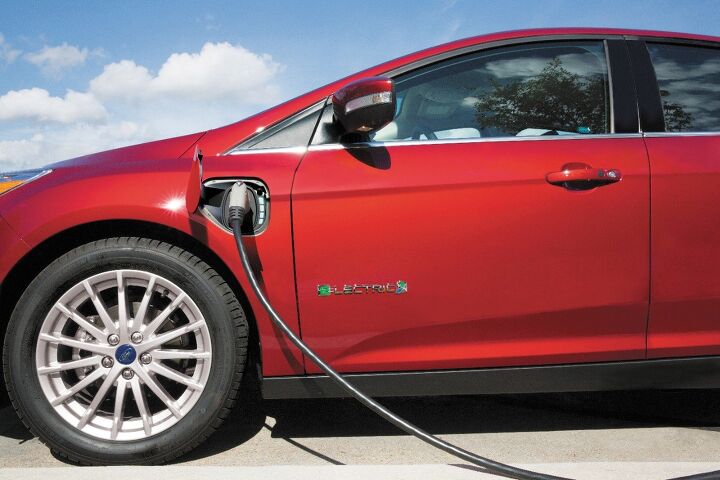

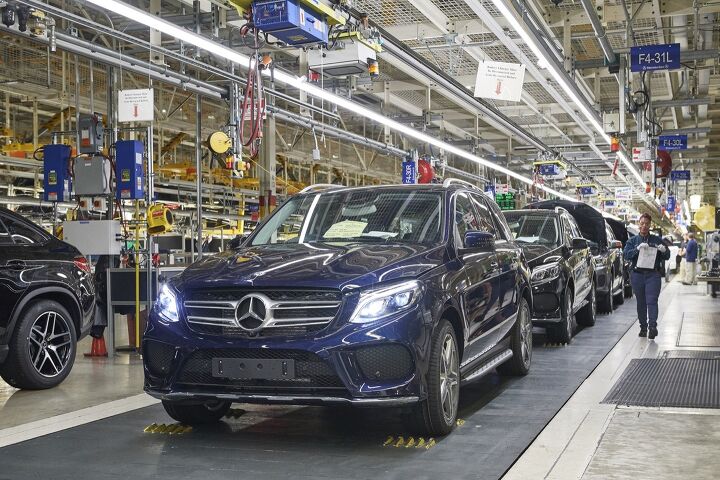

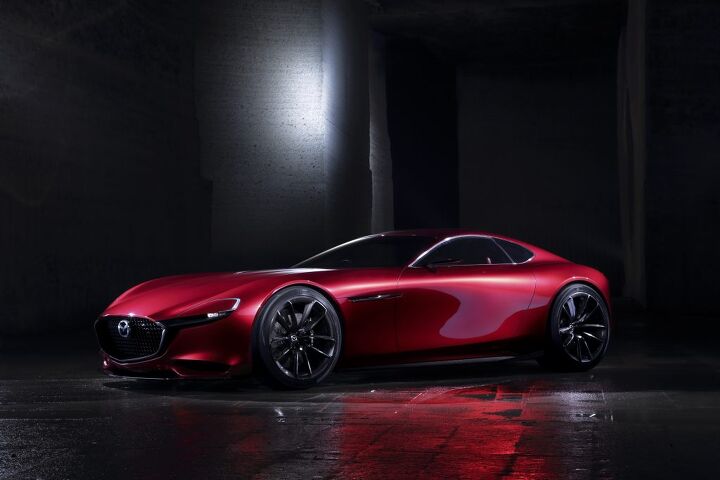


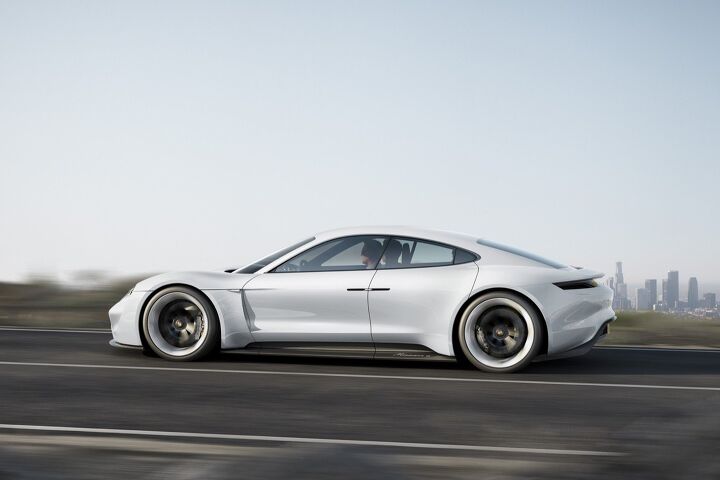

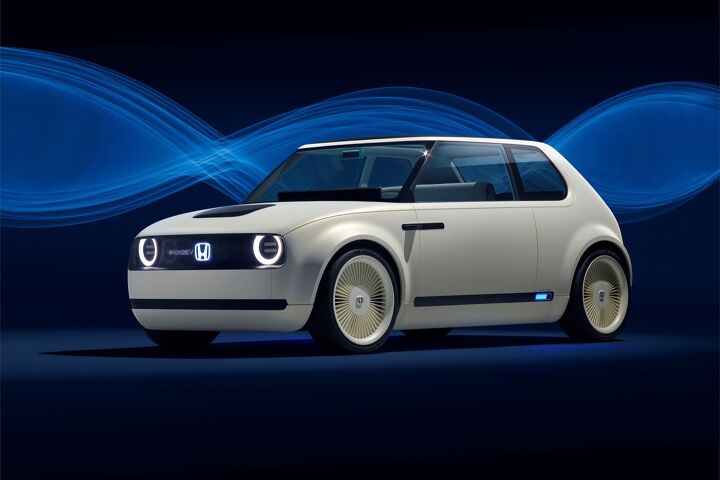

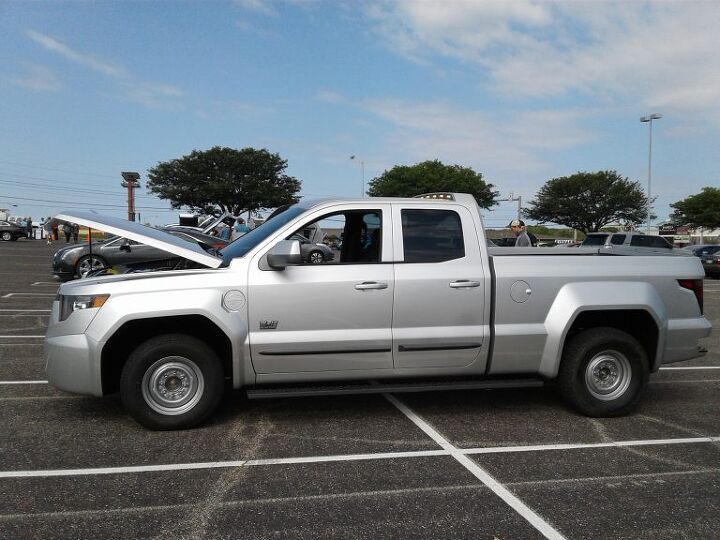





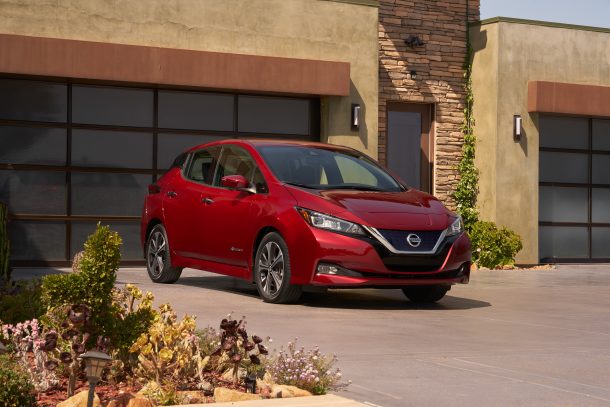

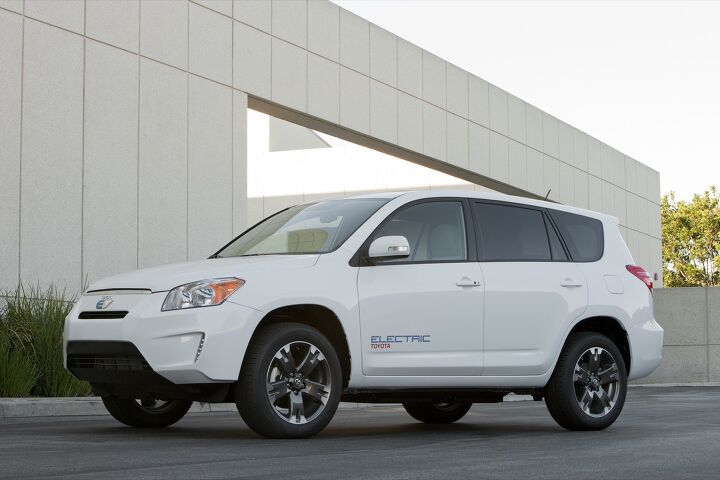





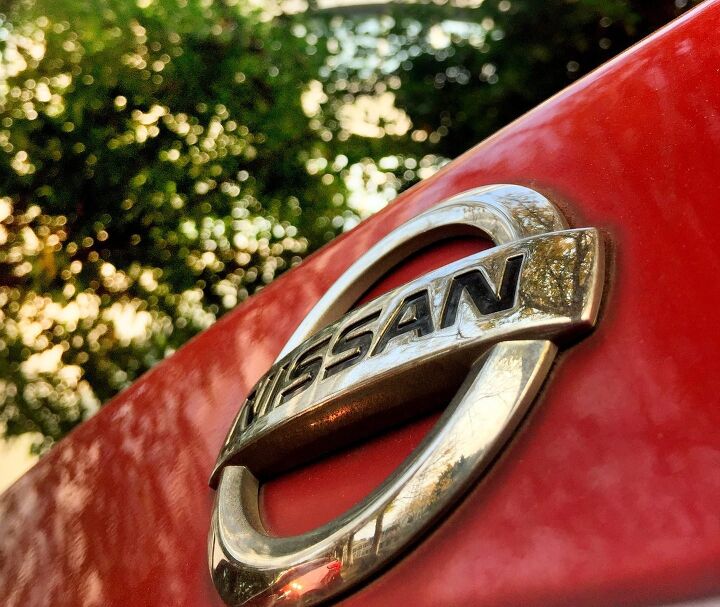





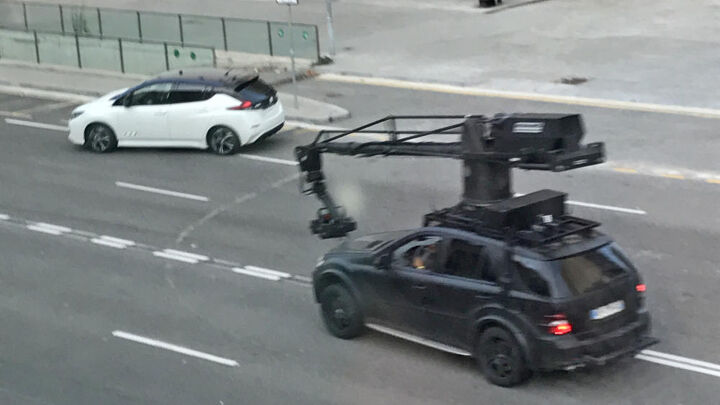

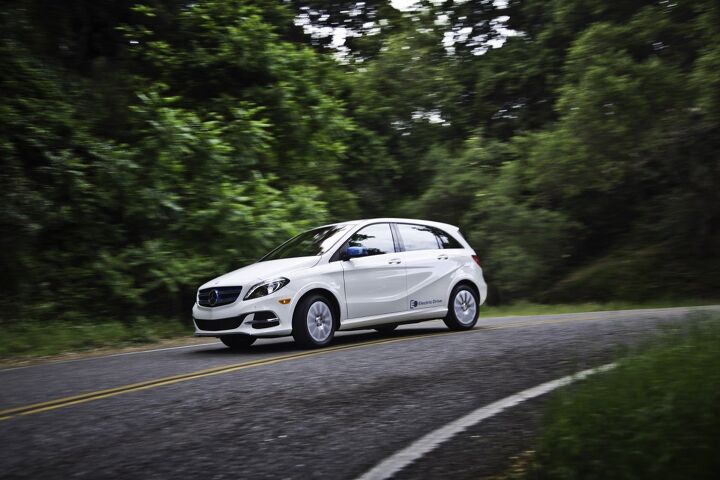








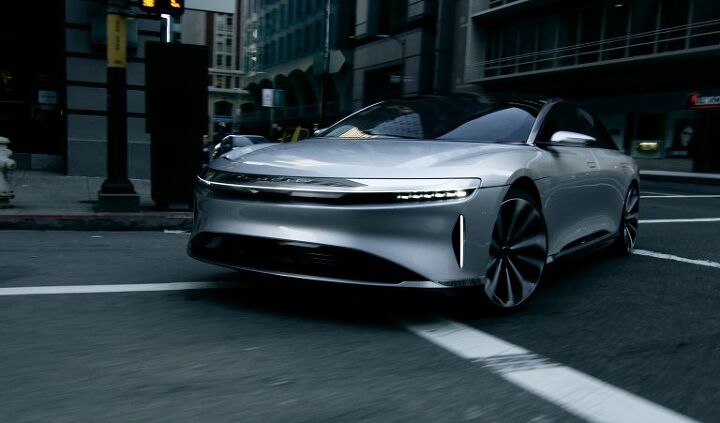



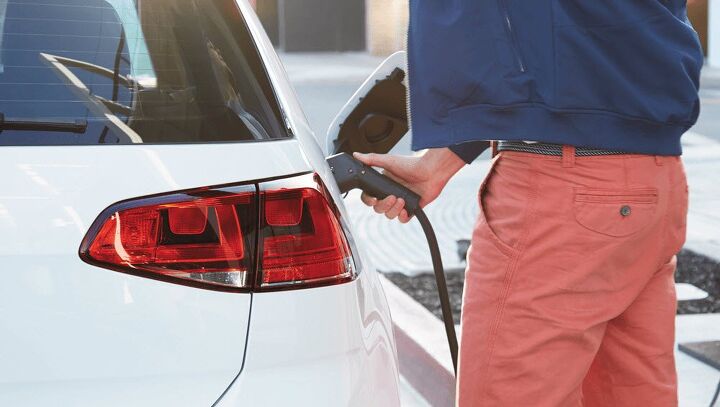
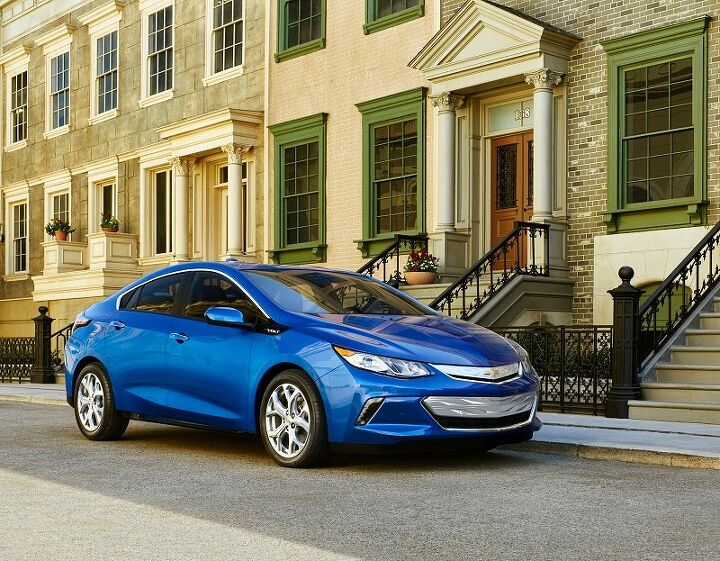



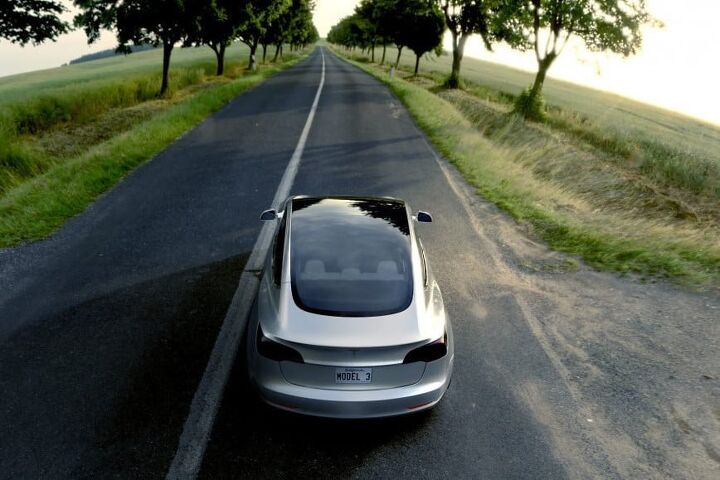


















Recent Comments